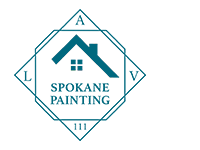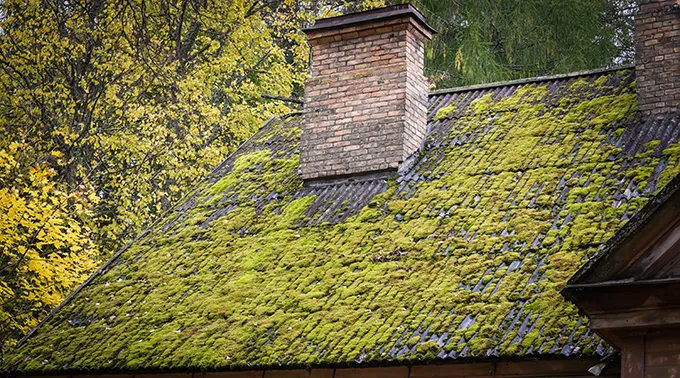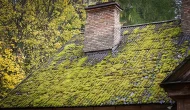Why You Need to Remove Moss from Your Roof Promptly
Moss might look rustic or charming on a cottage-style roof, but make no mistake—it’s damaging. Moss holds moisture against your roof surface, promoting rot, cracking, and decay. If ignored, it can shorten the lifespan of your roofing materials by years.
When you remove moss from the roof promptly and correctly, you protect your shingles, prevent water damage, and improve curb appeal. Whether you’re tackling it yourself or hiring pros, knowing the proper process to clean moss off the roof is crucial.
What Causes Moss to Grow on Roofs?
Understanding the cause of moss helps with both removal and prevention. Moss thrives in:
- Shady areas with limited sunlight
- Damp environments where moisture lingers
- Organic buildup like leaves, dirt, or algae
If you have large trees, poor attic ventilation, or live in a rainy region, moss is more likely to take root on your roof.
10 Proven Tips to Remove Moss from Roof Safely and Effectively
1. Never Use a Pressure Washer on Asphalt Shingles
Pressure washing can dislodge shingles and strip away protective granules. While it may remove moss quickly, it can void warranties and cause irreversible damage. Stick to gentle cleaning methods.
2. Use a Garden Hose with a Spray Nozzle
If moss is light, a garden hose with a spray nozzle can loosen and rinse it off. Always spray from the top of the roof downward to avoid pushing water under the shingles.
3. Apply a Commercial Moss Killer or DIY Solution
Choose a roof-safe moss remover product or make a DIY mix (50:50 water and white vinegar or bleach). Apply it on a dry day and let it sit for 15–20 minutes before rinsing.
4. Use a Soft-Bristle Brush to Loosen Moss
Gently scrub affected areas with a brush attached to a long pole. Avoid aggressive scrubbing—you’re aiming to remove moss, not shingles.
5. Clean the Gutters First
Clogged gutters contribute to roof moss by retaining moisture along the roof’s edge. Clear them out before starting any roof cleaning project.
6. Work in Small Sections and Be Safe
Always use a secure ladder, harness, and non-slip shoes. If your roof is steep or high, it’s best to call a professional.
7. Don’t Forget the Ridge Caps and Valleys
Moss often hides in the nooks and edges of your roof. Pay special attention to ridge caps, valleys, and under overhanging branches.
8. Rinse Thoroughly After Treatment
Leaving chemical residue can damage your roof over time. Once moss is removed, rinse the area thoroughly with water.
9. Schedule Cleaning During Dry Weather
Moisture and rain reduce the effectiveness of moss-killing treatments. Pick a dry, sunny day for optimal results.
10. Repeat Annually if Needed
Moss can return. Plan to inspect and clean your roof at least once a year—especially after winter or in shaded, damp locations.
Best Products to Clean Moss Off Roof Safely
Here are some highly-rated and effective options available for homeowners and contractors:
- Wet & Forget Moss, Mold, Mildew & Algae Remover – Gentle, non-acidic formula
- Spray & Forget Roof Cleaner – Biodegradable and safe for landscaping
- 30 SECONDS Outdoor Cleaner – Fast-acting and bleach-based
- Homemade Mix – 1:1 vinegar and water or 1 cup bleach to 1 gallon water (test first)
Always follow label directions and protect surrounding vegetation when applying chemical treatments.
Mistakes to Avoid When Trying to Remove Moss from Roof
Even with good intentions, homeowners can cause unintentional damage. Avoid these common errors:
- Using metal tools or wire brushes – They can gouge shingles and remove protective coatings
- Applying treatments on rainy or windy days – Reduces effectiveness and increases runoff risk
- Neglecting to inspect flashing and underlayment – Moss often grows in vulnerable spots
- Leaving debris on the roof afterward – Dead moss can hold moisture if not rinsed away
- Not addressing tree overhangs – Moss will return quickly without reducing shade and debris
When to Hire a Professional Roof Cleaning Company
If your roof is steep, multi-story, damaged, or heavily covered in moss, it’s time to call in licensed roof cleaning professionals. They have:
- Safety equipment and insurance
- Experience identifying roof vulnerabilities
- Commercial-grade cleaning agents and soft-wash systems
- Long-term treatment and prevention plans
Hiring pros may cost more upfront but reduces risks, extends roof life, and provides better results with less hassle.
How to Prevent Moss from Growing Back
Once you’ve cleaned moss off the roof, don’t stop there. Prevention is key:
- Trim overhanging tree branches to allow sunlight and reduce debris
- Install copper or zinc strips near the ridge—rainwater carries ions that inhibit moss growth
- Keep gutters clean year-round
- Check roof ventilation to reduce moisture buildup
- Schedule annual inspections to catch new growth early
Proactive care keeps your roof clean, healthy, and moss-free longer.
Roof Types Most Vulnerable to Moss Growth
Not all roofs are equally prone to moss. Here’s where it grows most commonly:
- Asphalt shingles – Especially older or shaded ones
- Wood shingles or shakes – Organic material makes them a moss magnet
- Clay or concrete tiles – Textured surfaces hold moisture
- Flat or low-slope roofs – Water drainage is slower
If your home has one of these, consider regular maintenance and protective coatings as part of your routine.
Final Thoughts – Clean Moss Off Roof the Right Way
Removing moss from your roof is a necessary part of home maintenance. Done right, it restores the beauty of your roof, extends its life, and prevents costly repairs. Whether you do it yourself with safe tools and methods, or hire professionals, what matters is that it’s done thoroughly, safely, and consistently.
Don’t wait until moss takes over—take action early and make roof care part of your annual routine.








